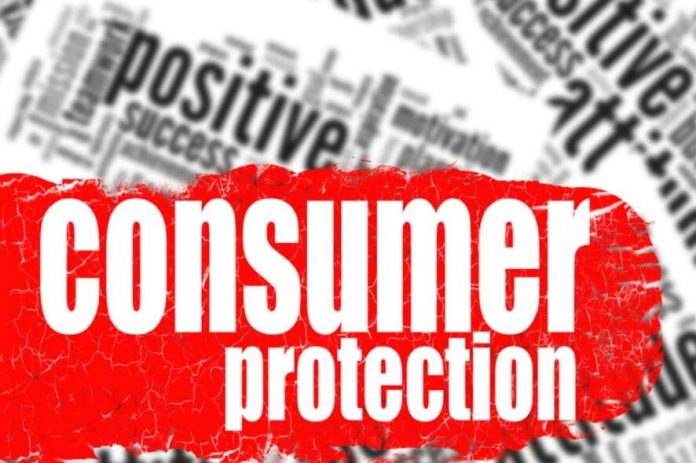This article is written by Gurpreet Singh, from the Faculty of Law, Delhi University. The article aims to appraise the readers about rules related to e-commerce, notified in furtherance of the “Consumer Protection Act, 2019”.
Table of Contents
Introduction
With the Covid induced lockdown, the world witnessed an unprecedented situation, but such are the wonders of modern systems that human civilization managed to stay afloat. The online commerce organizations witnessed an uptick in their demand. In simple terms, online commerce refers to buying and selling goods, services, or digital products over an internet network. The modern systems are as magnanimous as they seem as they are not infallible. With this due consideration, the Indian government introduced the Consumer Protection Act, 2019 to provide adequate protection to consumers essential to navigate through modern technology. Further in June 2020, the government notified Consumer protection(e-commerce) Rules, 2020 to regulate “e-commerce”.
Background
The Consumer Protection Act,2019 came into force on 20th July 2020 to adhere to the norms that are essential for protecting consumers in a commercial or professional setting with technological advancements and rapid digitization. The new Act ousted the old 1986 Act that was replete and obsolete in the need of modern requirements. The new Act intends to reduce the cumbersome procedure of law and provide swift justice by establishing a Central Consumer Protection Authority that will enforce the rights of the customers.
The Authority has the power to conduct investigations into the alleged violation of consumer rights and institute a complaint and further prosecute if required. The Authority also has the power to recall unsafe goods and services. Further, the Act intends to regulate E-commerce activities to provide a safe environment for consumers. To regulate the same, rules regarding the same were notified by the government on 23rd July 2020.
Objective and scope of the Act
The Rules apply to:
- Goods and services bought or sold over digital or electronic networks including digital products.
- All models of e-commerce include marketplace and inventory models as well.
- All e-commerce retail, including multi-channel single-brand retailers and single-brand retailers which are further classified into that, operate in single format or multiple formats.
- All forms of unfair trade practices (as defined under the Consumer Protection Act, 2019) across all models of e-commerce.
Although an interesting aspect is that these rules will not be applied to an activity carried on by a person carried out in personal capacity i.e that means an activity that is not a commercial or professional activity carried out systematically and regularly.
Marketplace e-commerce models refer to those entities that provide an information technology platform for conducting transactions, on the other hand, inventory models refer to that entity that owns the inventory of goods and services and sells it directly to the consumers.
Important provisions
- Sec 2 (2) – These rules will apply to e-commerce entities that are not established in India but systematically offer goods to customers in India.
- Sec 3 (i) – e-commerce as any person who accesses or avails any computer resource of an e-commerce entity.
- Sec 4 (1) (a) – imposes responsibility on e-commerce entities to appoint a nodal person or a senior functionary whose responsibility is to pay heed to the compliance of the Act.
- Sec 4 (4) – prescribes to set up a grievance redressal mechanism and appoint a grievance officer for speedy disposal of grievances.
- Sec 4(5) – imposes a 48-hour mandate to acknowledge a receipt of the complaint received by the grievance officer and redresses the complaint within one month from the date of receipt of the complaint.
- Sec 4(6) imposes a duty on the entity to disclose details about the importer if the product being sold is imported.
- Sec 4 (8) mandates an e-commerce entity that no cancellation charges would be if the entity itself does not accept to bear charges and if it cancels the purchase order without reason.
- Sec 4 (11) mandates e-commerce entities not to manipulate the price of goods or services that serves them unreasonable profits.
Roles and responsibilities
Liabilities of marketplace e-commerce entities
- It is the responsibility of the marketplace to ensure that sellers are selling genuine products and no misleading information about the product or service is propagated through its platform.
- The onus is on the platform to provide the following information.
- Details of the seller, including the name of the seller, their geographical address, customer helpline number, and any other feedback received.
- A ticket number through which the consumer can keep track of the complaint.
- Information relating to return, refund, exchange, warranty or guarantee, modes of payment, and grievance redressal mechanism.
- Information, regarding available payment methods, the security of those payment methods, and any other fees or charges payable by them.
- Maintain a record of sellers who have been booked previously for violating Copyright Act,1957, Trade Marks Act,1999, and Information Technology Act,2000
- Every marketplace e-commerce entity shall include in its terms and conditions generally governing its relationship with sellers on its platform, a description of any differentiated treatment which it gives or might give between goods or services or sellers of the same category.
Duties Of Sellers on Marketplace
- The seller shall not indulge in any unfair trade practice in the course of the offer on the entity’s platform or otherwise.
- The seller shall not indulge in deceit and post fake reviews about goods and services.
- No seller shall refuse to take back goods or services if they are defective, deficient, spurious, or misrepresented due to the advertisements.
- The seller shall display the country of origin for goods and services offered to the consumer on the e-commerce entity.
Duties and liabilities of inventory e-Commerce entities
- Every inventory e-commerce entity shall provide the following information in a clear and accessible manner, displayed clearly to its users:
- Information related to return, refund, exchange, warranty and guarantee, delivery and shipment, cost of return shipping, mode of payments, grievance redressal mechanism, and any other similar information which may be required by consumers to make informed decisions;
- All mandatory notices and information mandated by laws in force
- Information on available payment methods, the security of those payment methods, the procedure to cancel regular payments under those methods, any fees or charges payable by users, chargeback options, if any, and the contact information of the relevant payment service provider
- All contractual information required to be disclosed by law
- Total price in single figure of any goods or service along with the breakup price for the goods or service, showing all the compulsory and voluntary charges, such as delivery charges, postage and handling charges, conveyance charges, and the applicable tax; and
- A ticket number for each complaint is lodged, through which the consumer can track the status of their complaint.
- No inventory e-commerce entity shall post fake reviews by impersonating oneself to be a consumer or misrepresent the quality of the “goods or services”.
- Every inventory e-commerce entity shall ensure that the advertisements are genuine and are accurate to the characteristics of the product or service offered by the e-commerce entity.
- No inventory e-commerce entity shall refuse to take back goods, or withdraw or discontinue services purchased or agreed to be purchased, or refuse to refund consideration if paid, if such goods or services are defective, deficient spurious, or if the goods or services are not of the characteristics or features as advertised or as agreed to, or if such goods or services are delivered late from the stated delivery schedule.
- Any inventory e-commerce entity shall present genuine products and if any action is bought questioning the authenticity of the product or service, the entity would bear the responsibility of the same.
Limitations and exceptions
- The Act would not be able to comprehend all the situations of the fast pacing technology.
- The Act does not address the concerns of business-to-business models on whether they would be covered under the rules.
- The Act does take into consideration the ambiguities on who all will be covered under the definition of users, unverified claims could be filed to harass competitors.
- The Act doesn’t take into consideration the privacy of the consumers, who would be responsible for the data theft of the consumers.
- As far as exceptions are concerned the Act does not apply to natural persons who are concerned with personal activities and have no relation to the professional or commercial activities, that are performed systematically
Significance of the Act
The Act has come at the right time and the right hour. The Covid induced pandemic was an eye-opener as we witnessed, businesses exploiting customers of high rocketing prices of essential items such as sanitizers and soaps, with things going haywire, the Government had to step in. The Act provides teeth to the consumer and will provide a clandestine platform to consumers to prevent a business from indulging in unfair trade practices.
Further e-Commerce rules prevent the seller from posting fake reviews that create an illusion in the mind of a potential customer which will aid the consumers from protecting themselves from being allured into buying fake products. The Rules further mandate for setting up of dispute redressal mechanism and encourages the entities to settle disputes within 30 days to prevent consumers from continuous harassment from the vilification of the business that is not eager to lend an ear to consumer demands. The Act will be needed to toss the elephant in the room that is the ever-growing e-commerce industry without adequate protection to an average Indian consumer.
Critical analysis
“Every coin has 2 sides and the same goes for this Act as well.” It has its benefits but it is not free from its ambiguities and fallacies. The ambiguities are as follows:
- The e-commerce rules also apply to e-commerce entities that are not established to systematically provide goods to consumers in India. The term has not been systematically defined anywhere in the Act and leaves loose ends that are deemed to be exploited.
- The rules define “users” as persons that use a computer resource of an e-commerce entity so the question of contention is whether B2B businesses be covered under the ambit of this Act.
- The rules framed prevent sellers from posting fake reviews in the guise of customers but the point of contention is whether the businesses will be prevented from posing reviews on their products or services or of other sellers as well. Sellers can connive and pay other sellers to pose as customers.
- The rules missed addressing the concerns of privacy as well. The e-commerce entities possess plenty of personal data of consumers, if that data is stolen who will be responsible? No responsibility has been fixed.
- The rules also missed on the aspect of delivery charges that the consumers have to pay exorbitantly.
- The rules fail to address the ambiguity on the concept of “Surge Pricing” during peak hours. Whether that would be considered as unfair trade practices is a question worth pondering upon.
- The rules leave a grey area whether high delivery charges would be considered unfair trade practices or not
- What is meant by practices carried out by persons in a personal capacity is left unaddressed by the rules.
Recommendations
The author has no authority to offer recommendations on the rules framed by the government of India. The point elucidated in the critical analysis section should be addressed and amicable. A solution to the anomalies should be sought out by the industry experts and the government.
Conclusion
The consumer undoubtedly is the king of the market. The Consumer Protection Act, 2019, and the rules notified in the furtherance of the same are a welcome step in the right direction. The modern course of businesses is online commerce and leaving it unregulated would have been disastrous. With an ever-growing e-commerce market in India, consumers needed adequate safeguards. With a congenial atmosphere and deliberations, the Act can be modified to meet the requirements of emergent situations.
References
- http://www.businessworld.in/article/Consumer-Protection-E-commerce-Rules-2020-A-blessing-for-Consumers/12-01-2021-364776/
- https://www.trilegal.com/index.php/publications/analysis/consumer-protection-e-commerce-rules-2020#:~:text=The%20CPA%202019%20introduced%20significant,of%20goods%20and%20services%20online.
- https://consumeraffairs.nic.in/sites/default/files/E%20commerce%20rules.pdf
LawSikho has created a telegram group for exchanging legal knowledge, referrals and various opportunities. You can click on this link and join:
 Serato DJ Crack 2025Serato DJ PRO Crack
Serato DJ Crack 2025Serato DJ PRO Crack











 Allow notifications
Allow notifications



